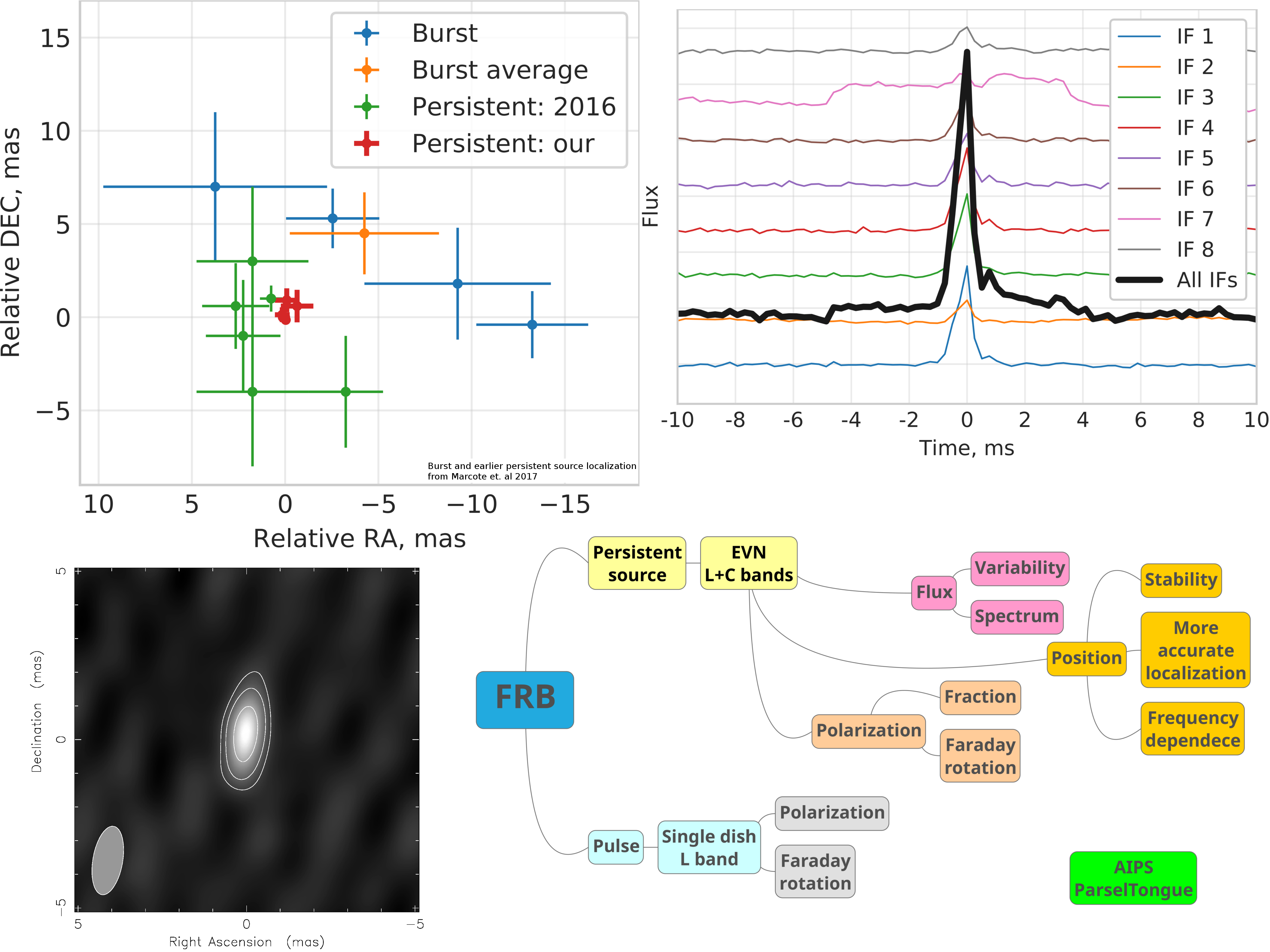Daily Image
22-08-2018A repeating fast radio burst and its persistent radio counterpart
| Submitter: | Alexander Plavin |
| Description: | Fast Radio Bursts is a phenomenon that produces brief (few millisecond duration) dispersed signals of unknown origin. Of the two dozens or so FRB pulses detected to date, only one of them showed repeated bursts, FRB121102. This allowed interferometric follow-up observations with the VLA and the European VLBI Network (EVN) and finally precise localization in the sky, for the first time for any FRB. The source is located in the outskirts of a dwarf galaxy at a redshift of z=0.193 (Chatterjee et al. 2017, Tendulkar et al. 2017, Marcote et al. 2017). There is an associated faint, persistent radio source at the location within the positional errors of the FRB pulses. This persistent radio source is either a very peculiar, magnetar-powered nebula (with an unusually high radio power), or it is related to a low-luminosity AGN off-center in the dwarf galaxy. The main goal of this summer project was to process the three epochs of EVN data at two frequencies to establish the properties of the persistent radio source. We studied its variability and found that the flux density is constant at the 10% level. The location is very stable as well at the level of 0.1 mas. The position does not depend on observing frequency, and we obtain the most accurate localization to date. We get an upper limit of 25% on fractional polarization for the persistent source at 5 GHz, which is much lower than for individual burst, that are almost 100% polarized at the same frequency. This proves beyond doubt that the persistent radio emission is not due to a large number of very weak repeating pulses. In addition the project included the study of the brightest pulse detected for this source at 1.6 GHz. We got preliminary results on its polarization, which is less than 30% in contrast to highly polarized C-band pulses. The detected rotation measure is the highest ever reported for this source. The image above shows the following (left to right, top to bottom): - Comparison of localization accuracy achieved in this project in comparison to previous observations. - The strongest pulse profile at 1.6 GHz. - EVN image of the persistent source. - Mindmap of this project including properties we studied and instruments used. |
| Copyright: | Alexander Plavin |
| Tweet |  |
